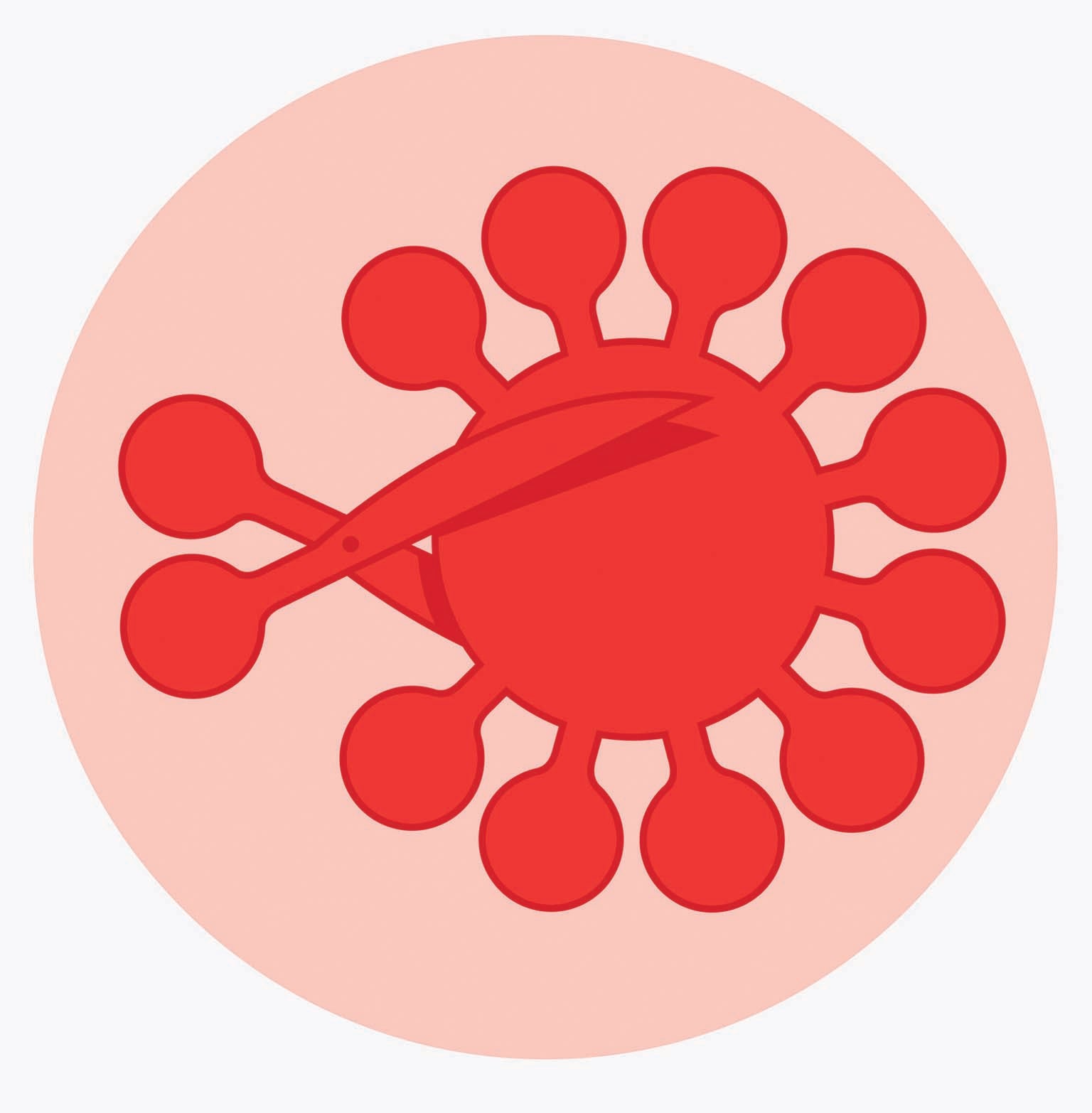
Artificial enzymes can fight the COVID-causing virus by selectively snipping apart its RNA genome, a new study suggests. Researchers say the technique may overcome key problems with previous technologies and could help create rapid antiviral treatments as threats emerge.
When the COVID pandemic struck, University of Cambridge chemical biologist Alexander Taylor scrambled to repurpose a gene-cutting technology he and his colleagues had been developing: synthetic enzymes called XNAzymes (xeno nucleic acids) formed from artificial RNA. Working single-handedly during lockdown, Taylor generated five XNAzymes targeting sequences in SARS-CoV-2’s genome in a matter of days.
Enzymes are natural catalysts that facilitate chemical transformations—in this case, by chopping other molecules apart. But previous DNA- and RNA-based enzymes have struggled to cut long, highly structured molecules such as virus genomes. Instead they destroy targets by recruiting existing enzymes inside cells—a less precise process that can lead to “off-target” cuts and increased side effects.
Taylor and his colleagues showed last year that XNAzymes can recognize and not cut sequences differing by a single “letter” of genetic code. And they perform better than previous efforts because they form tighter chemical bonds, the researchers say, maintaining their structure and function in conditions where DNA and RNA enzymes unfurl.
Popular CRISPR gene-editing tools can also target RNA, but the human immune system sometimes reacts poorly to the bacterial enzymes used. XNAzymes are not found in nature, making them less likely to trigger an immune system attack. They also don’t rely on co-opting extra components from within the cell; this might reduce side effects. “All contemporary RNA treatments make use of cellular machinery,” says biomedical engineer Roy van der Meel of Eindhoven University of Technology in the Netherlands, who was not involved in the new research. “This is a pair of stand-alone scissors.”
In the new study, published in Nature Communications, XNAzymes reduced replication of the SARS-CoV-2 virus in infected cells by up to 75 percent. “We’re pretty comparable to other approaches with years more development behind them,” Taylor says, although he notes direct comparisons have yet to be done.
The scientists used XNAzymes to target three parts of the virus’s genome, making it harder for mutations to dodge the attack. The approach can be quickly adapted to other viruses because the core system remains the same; only the part that binds the target is reprogrammed. “XNAzymes have great potential for precision medicine,” says study co-author Maria Donde, also at Cambridge. The group’s previous research suggests that XNAzymes might be effective against numerous diseases—potentially even targeting mutated cancer genes.
The researchers note that they haven’t yet designed a way to get these XNAzymes into human cells, but van der Meel says methods used for other RNA therapeutics could work. The team is currently working on XNAzymes’ stability and precision and testing additional target sequences.
